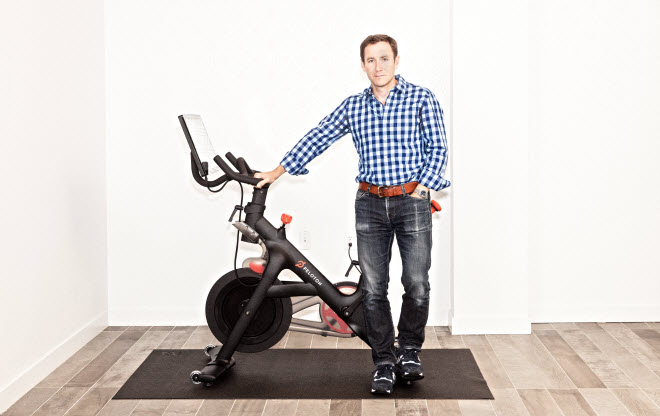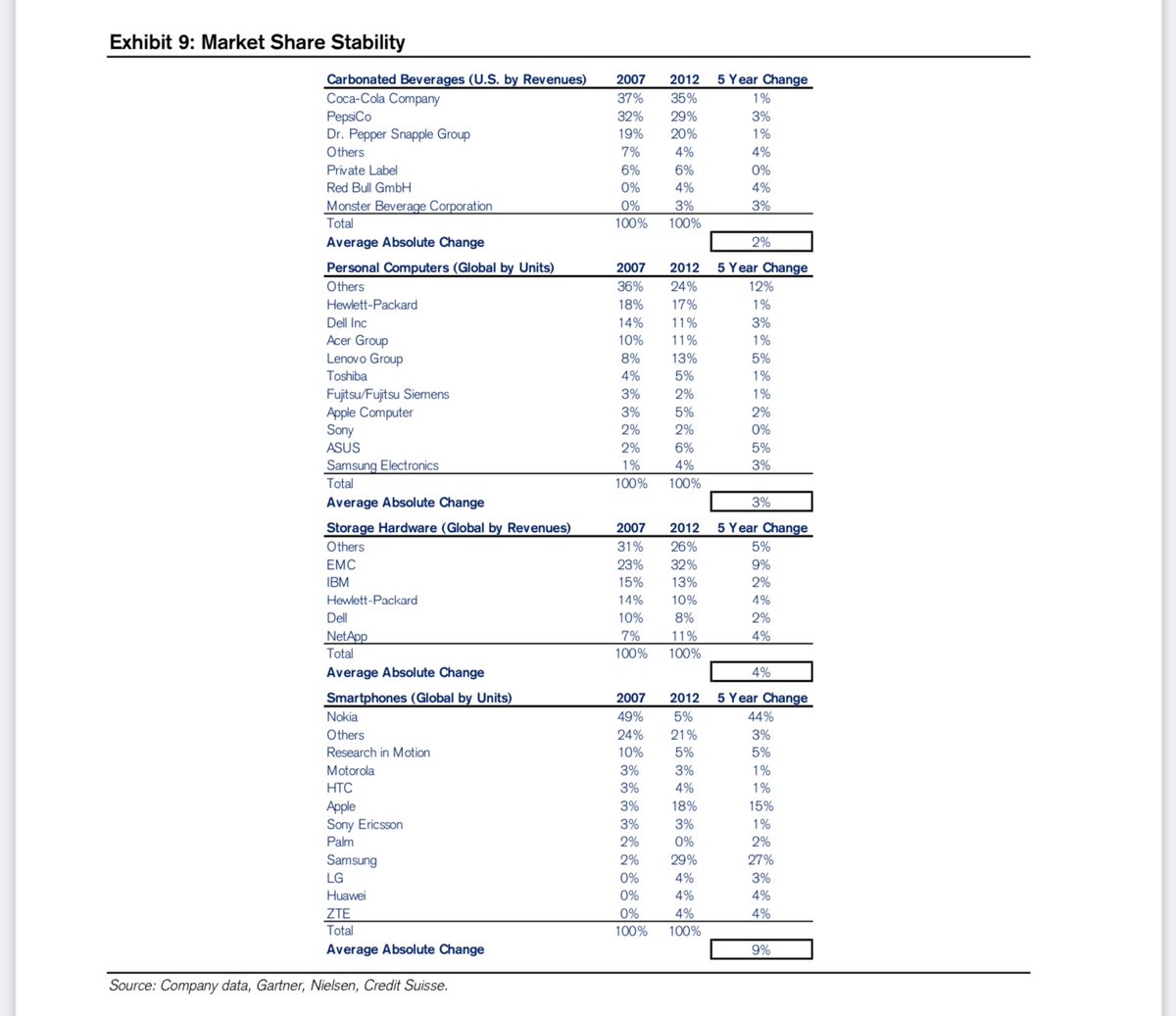First edition of "CEO Storms" (like tweetstorms)
Let's talk about John Foley, from Peloton.
[THREAD]
(h/t @HarleyMCarroll)
Let's talk about John Foley, from Peloton.
[THREAD]
(h/t @HarleyMCarroll)
https://twitter.com/investing_city/status/1310555250886090752

1/ Son of a Delta airline pilot, Foley grew up in Key Largo, FL.
In high school, Foley scored 220 points higher on the math section of the SAT so he decided to go into engineering.
He enrolled in a co-op program at Georgia Tech, working 6 months of the year while in school.
In high school, Foley scored 220 points higher on the math section of the SAT so he decided to go into engineering.
He enrolled in a co-op program at Georgia Tech, working 6 months of the year while in school.
2/ Where did he work?
Mars, the candy company. He oversaw the production of Skittles, Starburst, Snickers and Twix in Waco, Texas.
After graduating, he requested a move to LA, where he oversaw a few dog food brands for Mars.
Mars, the candy company. He oversaw the production of Skittles, Starburst, Snickers and Twix in Waco, Texas.
After graduating, he requested a move to LA, where he oversaw a few dog food brands for Mars.
3/ Three years later, Foley joined a dot-com start-up named CitySearch.
Shortly after, CitySearch merged with Barry Diller's Ticketmaster and John went off to Harvard Business School.
Afterward, he returned to Ticketmaster for a short stint.
Shortly after, CitySearch merged with Barry Diller's Ticketmaster and John went off to Harvard Business School.
Afterward, he returned to Ticketmaster for a short stint.
4/ In fact, the reason he joined Ticketmaster was because he couldn't find a job.
He had one lined up at BMG Music but the Napster disruption made his department irrelevant.
Fortunately, his brother-in-law was Ticketmaster's CEO, who created a position for him.
He had one lined up at BMG Music but the Napster disruption made his department irrelevant.
Fortunately, his brother-in-law was Ticketmaster's CEO, who created a position for him.
5/ While at IAC, he became CEO of Evite.com, the company that allows you to send virtual birthday cards and invites.
IAC bought Evite for $3 million in 2001, after the tech crash. Foley helped grow revenues from $1 million to $25 million.
IAC bought Evite for $3 million in 2001, after the tech crash. Foley helped grow revenues from $1 million to $25 million.
6/ Then Foley founded Pronto.com, under IAC. At one point during his tenure, Pronto grew 850%.
He stayed at Pronto 5 years before running e-commerce at Barnes&Noble.
He credits the "Nook" as partial inspiration for the hardware/software integration at Peloton.
He stayed at Pronto 5 years before running e-commerce at Barnes&Noble.
He credits the "Nook" as partial inspiration for the hardware/software integration at Peloton.
7/ Fun fact, the current Peloton President, William Lynch, was the CEO of Barnes&Noble who made Foley head of e-commerce.
Lynch was brought into B&N in 2009, well after Amazon was disrupting them and he launched the Nook.
Lynch was brought into B&N in 2009, well after Amazon was disrupting them and he launched the Nook.
8/ After this winding career path, John Foley founded Peloton in 2012.
Tapping into his HBS network, he raised $350k from angel investors and put in $50k of his own money.
He was still working for B&N with Lynch's knowledge for a little while because he had a mortgage/kids.
Tapping into his HBS network, he raised $350k from angel investors and put in $50k of his own money.
He was still working for B&N with Lynch's knowledge for a little while because he had a mortgage/kids.
9/ Most of the co-founders are ex-IAC employees.
Tom Cortese, COO, led another small company with Foley, named Proust, but he sold it in 2011.
Hisao Kushi, CLO, worked with Foley at IAC for a long time.
Graham Stanton, former SVP, was at IAC (Gifts.com)
Tom Cortese, COO, led another small company with Foley, named Proust, but he sold it in 2011.
Hisao Kushi, CLO, worked with Foley at IAC for a long time.
Graham Stanton, former SVP, was at IAC (Gifts.com)
10/ Yony Feng, CTO, is the final co-founder, who Foley knew at Georgia Tech.
Ok, they've got some seed funding so they approach SoulCycle and Flywheel to see if they can partner.
They get turned down.
Next step: making the prototype.
Ok, they've got some seed funding so they approach SoulCycle and Flywheel to see if they can partner.
They get turned down.
Next step: making the prototype.
11/ However, during this time, they kept running low on money.
Foley said he pitched VCs at least 3x/day for 4 years.
Zero institutions gave them money.
After 3,000 pitches, he raised $10 million from 100 angel investors.
Foley said he pitched VCs at least 3x/day for 4 years.
Zero institutions gave them money.
After 3,000 pitches, he raised $10 million from 100 angel investors.
12/ During the stressful time of not being able to raise money, Foley cleaned the bathrooms at their office so they didn't have to pay a cleaning crew.
Finally, in 2014, Tiger Global (Lee Fixel) gave Peloton money as the first institutional investor.
Finally, in 2014, Tiger Global (Lee Fixel) gave Peloton money as the first institutional investor.
13/ Shortly after this, they went to market. The plan was the create a Kickstarter to garner buzz and raise more money but it was a total flop.
They sold 200 bikes, 100 of the purchases were from investors.
The initial price was $1,200.
They sold 200 bikes, 100 of the purchases were from investors.
The initial price was $1,200.
14/ Foley got some feedback that the price "seemed too low."
So they doubled the price and sales velocity started increasing. Talk about a Veblen good!
Next, the problem of distribution.
So they doubled the price and sales velocity started increasing. Talk about a Veblen good!
Next, the problem of distribution.
15/ The company opened a pop-up store at the Short Hills mall in NYC. The math worked out that they would need to sell 1 bike/day.
Soon enough, they were selling 5.
The biggest objection wasn't the price but "what happens to my subscription when you guys go bankrupt?"
Soon enough, they were selling 5.
The biggest objection wasn't the price but "what happens to my subscription when you guys go bankrupt?"
16/ Peloton is now a $28 billion company and next quarter, they expect to triple YoY revenues.
John Foley, nearly 50, has had a long career path but he has persevered.
What's crazy is that Peloton's bikes have only been on the market for 6 years.
John Foley, nearly 50, has had a long career path but he has persevered.
What's crazy is that Peloton's bikes have only been on the market for 6 years.
17/ Foley thinks Peloton could be a $500 billion business one day with "a couple hundred million members."
Demand in this environment has clearly been strong and the company's new product enables a lower monthly cost.
Some of its instructors have > 500k followers on Instagram.
Demand in this environment has clearly been strong and the company's new product enables a lower monthly cost.
Some of its instructors have > 500k followers on Instagram.
18/ Just several years ago Foley was talking to his wife about the logistics of moving into his in-laws' house in case Peloton went bankrupt.
Now, Peloton is nearly a $30 billion company.
Don't give up.
Now, Peloton is nearly a $30 billion company.
Don't give up.
End/ Thanks so much for reading!
Main sources:
Forbes
forbes.com/sites/bizcarso…
How I Built This
podcast9.com/share/episode/…
Georgia Tech
gtalumni.org/s/1481/alumni/…
Main sources:
Forbes
forbes.com/sites/bizcarso…
How I Built This
podcast9.com/share/episode/…
Georgia Tech
gtalumni.org/s/1481/alumni/…
• • •
Missing some Tweet in this thread? You can try to
force a refresh


















